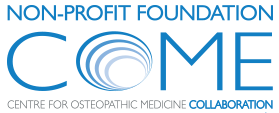Clinical effectiveness of osteopathic treatment in chronic migraine: 3-Armed randomized controlled trial
Objective
To assess the effectiveness of OMT on chronic migraineurs using HIT-6 questionnaire, drug consumption, days of migraine, pain intensity and functional disability.
Design
3-Armed randomized controlled trial setting: all patients admitted in the Department of Neurology of Ancona’s United Hospitals, Italy, with a diagnosis of migraine and without chronic illness, were considered eligible for the study.
Interventions
Patients were randomly divided into three groups: (1) OMT + medication therapy, (2) sham + medication therapy and (3) medication therapy only. Patients received 8 treatments in a study period of 6 months.
Main outcome measures
Changing from baseline HIT-6 score.
Results
105 subjects were included. At the end of the study, ANOVA showed that OMT significantly reduced HIT-6 score (mean change scores OMT–conventional care: −8.74; 95% confidence interval (CI) −12.96 to −4.52; p < 0.001 and OMT–sham: −6.62; 95% CI −10.85 to −2.41; p < 0.001), drug consumption (OMT–sham: RR = 0.22, 95% CI 0.11–0.40; OMT–control: RR = 0.20, 95% CI 0.10–0.36), days of migraine (OMT-conventional care: M = −21.06; 95% CI −23.19 to −18.92; p < 0.001 and OMT–sham: −17.43; 95% CI −19.57 to −15.29; p < 0.001), pain intensity (OMT–sham: RR = 0.42, 95% CI 0.24–0.69; OMT–control: RR = 0.31, 95% CI 0.19–0.49) and functional disability (p < 0.001).
Conclusions
These findings suggest that OMT may be considered a valid procedure for the management of migraineurs.
The present trial was registered on www.ClinicalTrials.gov (identifier: NCT01851148).







